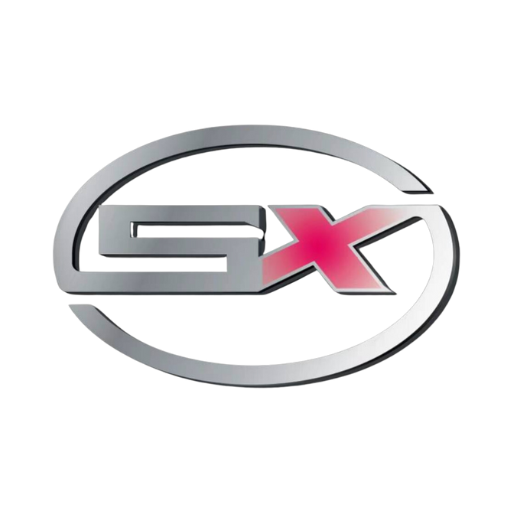JLR As-Built Coding and Flashing Workshops
Empower your workshop with dealership-level capabilities. Securely apply JLR as-built data, configure new and used modules, and perform controlled firmware flashing—without the expensive subscriptions or online dependency. Master complex repairs and profitable retrofits with SX-Tool.
Explore SX-Tool for Workshops
Request a Free Demo
The High Stakes of JLR Module Programming
For independent workshops, servicing modern Jaguar and Land Rover vehicles (2017+) presents a significant challenge. The complexity has shifted from mechanical skill to software proficiency. Module replacement, retrofitting, and even certain repairs now demand intricate software procedures once reserved for main dealers. Navigating this landscape with inadequate tools is not just difficult—it's risky and can severely impact your workshop's profitability and reputation.
The Problem: Dealer-Locked Ecosystems
Independent workshops face a technological wall. The traditional path involves:
- Crippling Costs: Official JLR Pathfinder and TOPIx Cloud subscriptions are prohibitively expensive for most independent shops, requiring ongoing fees that eat into profit margins.
- Forced Online Dependency: Dealer tools require a constant, stable internet connection to JLR servers. Any interruption—a slow connection, a server timeout—can corrupt a programming session, potentially “bricking” an expensive control module.
- Restrictive, “Black Box” Processes: OEM tools offer limited control. You initiate a process and hope for the best. There is little to no ability to manually Intervene, edit configuration data on the fly, or use second-hand parts, forcing you to buy new, expensive modules from the dealer.
- Steep Learning Curve: The JLR official software suite is notoriously complex and non-intuitive, requiring significant, often unbillable, time for technicians to become proficient. This creates a skills gap and a bottleneck in your workshop.
The Solution: SX-Tool Engineering Power
SX-Tool smashes through these barriers by providing a powerful, flexible, and cost-effective engineering tool designed *for* the workshop.
- Break Free from Subscriptions: SX-Tool is a software solution that primarily works offline. [sx-tool.com](https://sx-tool.com/en/product/jet-master-jlr-engineering-tool-sx-tool-jlr-coding-programming/) No more paying exorbitant monthly fees or relying on third-party servers for core functions. Your workshop controls the process.
- Total Programming Control: Gain granular control over the coding and flashing process. Edit the Car Configuration File (CCF) directly, use VBF flash files from any source, and safely program new or used modules without restriction.
- Unlock New Revenue Streams: Confidently offer high-value services like module replacement with used parts, custom feature activations, and advanced OEM retrofits (e.g., surround cameras, adaptive cruise control) that were previously “dealer-only.”
- Intuitive and Efficient: Designed with the technician in mind, SX-Tool streamlines complex processes. Read/Write CCF, edit VBFs, and execute flashing sessions through a clean, logical interface that reduces errors and saves valuable workshop time. [sx-tool.com](https://sx-tool.com/en/jlr-engineering-tool/)
A Practical Guide: JLR As-Built Coding & Flashing with SX-Tool
Transitioning from theory to practice is where SX-Tool excels. Here is a detailed breakdown of how your workshop can perform advanced JLR programming tasks, demystifying the entire process.
Step 1: Connection and Vehicle Identification
A stable connection is the foundation of any successful programming job. Unlike the expensive, proprietary interfaces required by dealer tools, SX-Tool leverages the robust and widely available ENET standard for DoIP (Diagnostics over Internet Protocol) vehicles.
- Hardware Connection: Connect your laptop running SX-Tool to the vehicle's OBD-II port using a standard BMW ENET cable or, for maximum flexibility, a dedicated JLR Enet WiFi Adapter. [help.jlr-retrofit.com](https://help.jlr-retrofit.com/docs/coding-via-enet-jet-master-sx-tool/) This simple setup eliminates the need for the costly JLR DoIP VCI.
- Vehicle Detection: Launch the SX-Tool software. It will automatically scan the network and detect the vehicle's gateway, establishing a high-speed DoIP connection.
- Full System Scan: Perform a complete vehicle scan to identify all installed control modules, read their current software versions, and retrieve any Diagnostic Trouble Codes (DTCs). This provides a critical baseline before making any changes.
Step 2: Mastering As-Built Data (CCF Management)
The Car Configuration File (CCF) is the vehicle's DNA. It dictates everything from which features are enabled to how different modules communicate. SX-Tool gives you full editorial control over this vital data.
- Reading the CCF: With a single click in SX-Tool, you can read the complete CCF directly from the vehicle and save it as a backup. This is a non-negotiable first step for safety and reference.
- Using the SX-Tool محرر CCF: Open the saved CCF file in the integrated editor. The parameters are presented in a clear, searchable list—no more deciphering cryptic hexadecimal code. You can easily modify settings for tasks such as:
- Activating Dynamic Mode.
- Enabling Android Auto / Apple CarPlay.
- Configuring settings for a newly retrofitted module.
- Disabling seatbelt chimes or modifying DRL behavior.
- Writing the Modified CCF: After making your changes, SX-Tool allows you to write the modified CCF back to the vehicle. The software handles the complex checksum calculations and ensures the data is written correctly across the relevant modules, providing a safe and controlled update process.
Step 3: Controlled Module Flashing (VBF Programming)
Flashing, or reprogramming, a module with new firmware is one of the highest-risk procedures. SX-Tool mitigates this risk by putting control firmly in your hands.
- Understanding VBF Files: VBF (Vehicle Binary File) is the format JLR uses for module firmware. You may need to flash a module to update its software, fix a known bug, or make it compatible after a retrofit. These files can be sourced from various places, giving you flexibility beyond the dealer's walled garden.
- The SX-Tool VBF Editor: Before flashing, SX-Tool's VBF Editor allows you to inspect the file, verify its compatibility, and even make specific edits if required for advanced jobs. This pre-flash validation step is a critical safety feature missing from more basic tools. [sx-tool.com](https://sx-tool.com/en/jlr-engineering-tool/)
- Executing a Safe Flash: SX-Tool's flashing procedure is designed for workshop reality. It includes pre-checks for battery voltage (a stable power supply is mandatory) and verifies communication integrity before starting. You select the target module, load the desired VBF file, and initiate the flash. The progress is clearly displayed, and the process is managed locally on your machine, not dependent on a fragile cloud connection.
- Post-Flash Procedures: After a successful flash, the job isn't done. The module often needs to be configured. This may involve using SX-Tool to perform a ‘VIN Learning' procedure to pair the module to the car, clearing all DTCs from the system, and performing any necessary calibrations.
Real-World Workshop Scenarios Solved with SX-Tool
Here’s how SX-Tool transforms complex, often impossible, tasks into profitable, in-house services.
Scenario 1: Replacing a Body Control Module (BCM) with a Used Part
- The Challenge: A customer's Range Rover has a failed BCM. A new module from the dealer is thousands of dollars and on backorder. You've sourced a compatible, working used module from a salvage vehicle. Dealer tools will reject this part.
- The SX-Tool Solution:
- Install the used BCM into the vehicle.
- Connect SX-Tool and read the vehicle's original CCF (saved from before or from another vehicle system).
- Modify the CCF if necessary to account for any differences, or simply write the original vehicle's CCF to the system. This tells the car how the new BCM should behave.
- Using SX-Tool, execute the “Replace ECU” or “VIN Learn” function for the BCM. This securely pairs the used module to the car's immobilizer system.
- Clear all DTCs. The vehicle is now fully functional with the used part, saving the customer thousands and earning your workshop a healthy profit on a job others would turn away.
Scenario 2: Retrofitting an OEM 360 Surround-View Camera System
- The Challenge: A client wants to add the factory 360-degree camera system to their Jaguar F-PACE that didn't come with it from the factory. You have the OEM hardware (cameras, module, wiring).
- The SX-Tool Solution:
- Physically install all hardware components according to JLR wiring diagrams.
- Connect SX-Tool and read the car's current CCF.
- Using the CCF Editor, find the parameters related to the camera system (e.g., “Surround Camera System,” “Parking Assistance Features”). Change these from “Not Fitted” to “Fitted”.
- You may also need to enable the camera views in the infotainment module (IMC) parameters within the CCF.
- Write the modified CCF back to the vehicle. SX-Tool will automatically configure all relevant modules (BCM, IPC, IMC) based on your changes.
- The new Parking Aid Module (PAM) may need to be flashed with the correct firmware. Use SX-Tool's VBF flashing utility to do so.
- Run the camera calibration routine available within SX-Tool. Your customer now has a fully functional, factory-integrated 360-camera system. [sx-tool.com](https://sx-tool.com/en/)
Scenario 3: Correcting a Faulty Configuration from a Previous Repair
- The Challenge: A Land Rover Discovery comes to your shop with multiple, persistent communication errors (DTCs) and non-functional features after a battery replacement at another shop. They likely “spiked” the system or caused a configuration loss.
- The SX-Tool Solution:
- Connect SX-Tool and perform a full system health check, logging all DTCs. The codes point to configuration mismatch in the Gateway Module (GWM).
- Instead of guessing, use SX-Tool to find a known-good CCF file for the same model and specification vehicle.
- Load this known-good CCF into the SX-Tool editor and compare it line-by-line with the corrupted file read from the vehicle. Identify the incorrect parameters.
- Correct the parameters in the vehicle's current CCF to match the known-good file.
- Write the corrected CCF to the vehicle. This single action realigns all modules.
- Clear all DTCs. The communication errors vanish and all features return to normal operation. You've fixed a complex software issue in under an hour.
Why SX-Tool Outperforms Dealer Tools for Independent Workshops
| Feature |
أداة SX-Tool |
JLR Pathfinder / TOPIx Cloud |
| Pricing Model |
Software license model, cost-effective for workshops. |
Extremely high annual/monthly subscription fees. |
| Internet Dependency |
✔ Primarily Offline. Core functions (CCF editing, flashing) do not require an internet connection. |
✖ 100% Online. Requires a constant, fast connection to JLR servers, risking session failure. |
| Required Hardware (VCI) |
✔ Inexpensive and common BMW ENET Cable or JLR Enet WiFi Adapter. |
✖ Proprietary and expensive JLR DoIP VCI. |
| CCF (As-Built) Editing |
✔ Full Read/Write/Edit capability with a user-friendly editor. |
✖ Locked down. Can only re-flash the entire vehicle to a factory state. No manual editing. |
| Use of Second-Hand Modules |
✔ Fully supported through VIN learning and as-built configuration. |
✖ Blocked. System typically rejects modules with a foreign VIN. |
| Software Flashing (VBF) |
✔ Flexible. Allows use of VBF files from any source with pre-flash validation. |
✖ Restricted. Only allows flashing of approved files downloaded from TOPIx. |
| Speed & Performance |
Direct vehicle-to-PC connection results in fast, reliable programming sessions. |
Slow performance due to latency from cloud servers and large mandatory file downloads. |
| Workshop Flexibility |
✔ Empowers technicians to perform custom work, retrofits, and advanced diagnostics. |
✖ Restricts work to dealer-approved, linear processes. Stifles problem-solving. |
Frequently Asked Questions about JLR As-Built Coding
1. What specific JLR models are supported by SX-Tool for as-built coding?SX-Tool is specifically designed for modern JLR vehicles that use the DoIP (Diagnostics over Internet Protocol) architecture. This generally covers all models from 2017 to the present day, including the latest Defender, Range Rover, Velar, Discovery, F-PACE, E-PACE, and more. If the vehicle uses DoIP, SX-Tool is your solution.
2. Do I need an active TOPIx subscription to use SX-Tool for flashing modules?No. This is one of the key advantages of SX-Tool. You do not need any active JLR subscription like TOPIx or Pathfinder. [sx-tool.com](https://sx-tool.com/en/product/jet-master-jlr-engineering-tool-sx-tool-jlr-coding-programming/) All core functions, including CCF editing and VBF module flashing, are performed by

